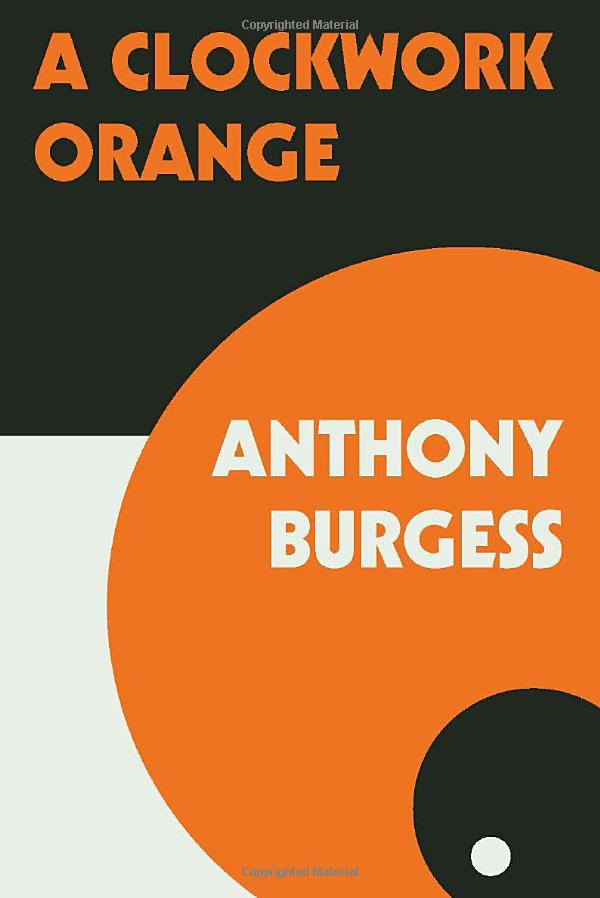
This evening, Rob and I went to our local Barnes & Noble to see what was what. I was pleased to see that it wasn’t empty, that there were people actually perusing the shelves. I was also happy to see that in the new non-fiction section, there weren’t any books that were blatantly pro-trump.
I paused at a display table with a sign on it that said: Books you should have read but probably didn’t. I glanced at the titles: To Kill a Mockingbird and A Clockwork Orange leaped out at me. I’d read Harper Lee’s 1960 book and had seen the movie adaptation with Gregory Peck. I remembered reading the book when I was in boarding school in Massachusetts.
The second book, by Anthony Burgess, was published in 1962 and in 1971, Stanley Kubrick made the movie. I remember seeing the movie, was pretty sure I’d read the book, but have no specific memory of doing that, so I picked I up and opened it to the copyright page, 1962, 1986, 2019.
I Googled Burgess. He was born feb 25 1917 in Manchester, England, a Pisces. But that’s another post. He died on Nov 22, 1993, in London, 30 years to the day of Kennedy’s assassination.
I opened the book to the first page, an introduction from 1986
Introduction
A Clockwork Orange Resucked
“I first published the novella A Clockwork Orange in 1962, which ought to be far enough in the past for it to be erased fro the world’s literary memory. It refuses to be erased, however, and for this the film version of the book by Stanley Kubeick may be held chiefly responsible.”
His intro to this edition, written 7 years before his death is 1993, captivated me. Here’s why. The original manuscript had 21 chapters. “The number of chapters is never arbitrary,” Burgess wrote. “Just as a musical composer starts off with an image of bulk and duration, so a novelist begins with an image of length, and this image is expressed in the number of sections and the number of chapters into which the work will be disposed. There twenty-one chapters were important to me. “
But his New York publisher thought otherwise. He eliminated chapter 21 and bought the book with 20 chapters. Burgess explains that he needed money back in 1961 – “even the pittance I was being offered as an advance” – and if the condition of the book’s acceptance was also its truncation – well, so be it.”
The result? This American edition includes Chapter 21, which Kubrick also included in his film. Burgess remarks that people wrote and asked why why Kubrick had left out the denouement. So what happens in the 21st chapter? As Burgess himself wrote in 1986: Readers of the twenty-first chapter must decide for themselves whether it enhances the book they presumably know or is really a discardable limb.”
So, stay tuned…








I read the Penguin paperback version of ‘A Clockwork Orange’ years ago not knowing there was an alternate ending to the book.
21 chapters sounds like very deliberate tarot “fool’s journey” theme to me by Burgess.
And you mentioning Burgess dying 30 years to the day of Kennedy’s assassination of Nov 22nd, 1963, made me realize that Kennedy died 60 years ago this year and 1963 was also the Chinese astrological Year of the Water Rabbit like 2023 is.
Synchromysticly, I just finished reading George Eliot’s book (and watching the 1994 BBC drama) ‘Middlemarch’ and discovered she was born on November 22nd 1819, which was also the Year of the Rabbit … but not the Water Rabbit 🙂
Kubrick died in 1999, the Year of the Rabbit, too.
And 3 of 4 of Kubrick’s last movies came out in Rabbit years (The Shining being the exception there).
Synch is a rabbit (w)hole it seems?
I leave these fascinating synchronicity threads to you, Daz! This one is really intriguing.
Aldous Huxley died on the day Kennedy was assassinated and shared July 26th as a birthday with Kubrick and Jung, too. 😉
Wow! Didn’t know this. Thanks, Daz!
21st Century…
True!